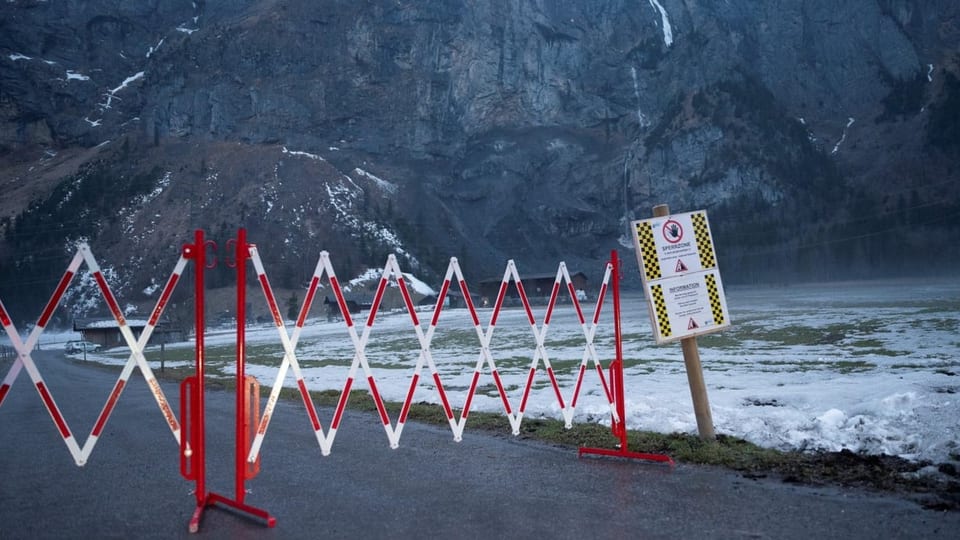On Thursday afternoon, 15,000 to 20,000 cubic meters of rock broke off at the Allmenalpbahn near Kandersteg. No one was injured in the fall. The houses were also spared. The rock has been closely monitored by Geotest since December. CEO Daniel Tobler had warned against the demolition. He happened to be there when the incident happened.
SRF News: How reliably can experts predict such rockfalls?
Daniel Tobler: That always depends on the mechanism. In the current case, the damage potential was relatively far away. This enabled us to say with simple measurements from a distance that a critical phase is currently prevailing. You didn’t have to predict it to the minute.
How can you predict such rockfalls?
In the background there is a geological model. This is related to fissures in the rock and the mechanism – we can assume how the rock will behave in relation to a rupture, to thermal snaps, to pressurized water in the fissures.
A termination time can be predicted based on movements.
So you can record the movements with distance measurements or with other measuring devices relatively reliably. Based on these movements, a termination time can be predicted.

Legend:
The basic geological disposition of Kandersteg is predestined for such large rockfalls, says the geologist Tobler.
Keystone/Karin von Känel
When do such predictions fail?
A prognosis is difficult wherever there is a spontaneous termination without movements in advance. You don’t really know where or when to look. One has to find the dispositions and recognize where and when a critical point can be reached.
Did climate change play a role in the rock fall in Kandersteg?
No, climate change had nothing to do with it. This was a normal weathering process in a rock face. Along with the right basic disposition, the rock was weakened. In the last two months we have had freeze and thaw cycles which have weakened the rock structure. Water has entered the rock for the last two days or the last day. That could trigger the rockfall.
What influence does climate change have on such rockfalls?
With warming, the risk of rockfall in the Alps has increased a priori. Previously frozen areas are gradually thawing. Ice and permafrost with a stabilizing effect are thawing. Water is freely accessible. Water is a driving force in almost all mass movements in the Alps.
How is climate change affecting your monitoring work?
Surveillance certainly has its limits. However, in recent years new technologies have been developed. Critical areas can be identified at an early stage from a distance using satellites and drones. Through large-scale analyzes in the Alps, we identify potentially critical areas.
We have to recognize the processes at an early stage.
We know many areas and this results in process chains. We have to recognize the processes at an early stage, especially when they reach the settlement area. You’re on the right track there.
Nina Gygax conducted the interview.

